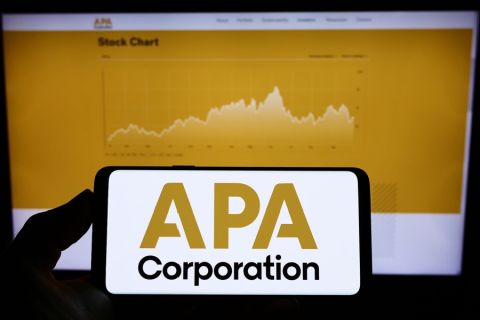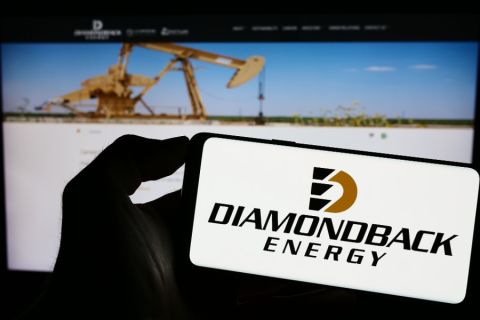
The Elba Island LNG terminal located near Savannah, Ga. Source: Kinder Morgan Inc.
As has been well-established by this point, midstream insiders expected Kinder Morgan Inc. would need to do something big to manage its MLP’s distribution growth, which was doling out at least 5% each year, along with it general partner’s 50% take in profits. During the weekend, some of the top MLP pros like Hinds Howard, CBRE Clarion Securities’ vice president and senior financial analyst, and the folks at Raymond James addressed the question of what’s next.
Howard’s note to investors, “The Big Rich,” said in acquiring the assets of its three business units, the KMI transaction accomplishes the following:
- A stepped-up tax basis with the acquired companies and benefits from both higher and accelerated depreciation from that basis, to reduce the effective tax rate at KMI—and increase distributions—by 10% for the next several years;
- With the combined entity, KMI will have a target leverage of five to five-and-a-half times EBITDA, rendering it investment-grade; and
- Among the most intriguing possibilities, KMI’s new, lower cost of capital coupled with its sheer size (around $140 billion enterprise value), position the company as an acquirer of other midstream companies.
The Kinder conglomerate, no longer encumbered by the qualifying assets rules of the MLP, is free to expand on making good on the notion of domestic acquisition. As Howard pointed out, while MLPs may be weighing what’s next in the U.S., Kinder Morgan will be able to buy non-qualifying assets abroad—for example Canadian pipelines, LNG regasification terminals in Asia and Europe or terminals in Latin America.
“I don’t know, but it seems like this transaction set them up to be able to do that,” he wrote.
CEO Rich Kinder said last week he still believes in MLPs, and as the man who popularized them, it won’t be surprising if he steps back into the MLP waters.
“Kinder will have another MLP someday, whether it’s a spin out of existing assets in 2016 or 2017, or it’s an MLP acquired as part of buying an existing MLP’s GP,” he said. “But the flow-through tax advantages are still there.”
Neutral impact on the sector
Similar to the other analysts we’ve spoken to after the Kinder Morgan announcement, Howard doesn’t believe the move signals the end of the MLP’s viability as a business structure.
“I don’t think this will lead to other MLPs leaving the MLP structure,” Howard wrote. “[Enterprise Products Partners] is much larger than [the Kinder MLP], with a market capitalization of roughly $70 billion. [Enterprise] is under no pressure whatsoever to convert its MLP to a corporate structure.”
Howard noted that Enterprise actually solved its incentive distribution rights (IDR) issue, in which the general partner takes an ever-growing chunk of the MLPs profits until it reaches 50%, by eliminating them. That also brought down its cost of capital struggles, he said.
But Kinder Morgan wasn’t the only MLP paying a chuck of its cash to its general partner. As Howard noted, other than Kinder Morgan, Energy Transfer Partners is paying 38.1%, Plains All American Pipeline is paying 34.9%, Williams Partners is paying 32.2%, ONEOK Partners is paying 31.2% and Alliance Resource Partners LP is on the hook for 28.1%.
RayJa explained that while structural general partners’ IDRs do align and quantitatively incentivize management to ramp up limited partner cash distributions, “There is no denying the long-term disadvantageous cost of capital math. Specifically, as LP cash distributions grow, the GP take on rising incremental distributions becomes larger, especially as the LP hits the highest tier in the IDR platform, which yields almost 50% of each incremental DCF dollar generated to the GP,” they wrote. “Over time, the GP ‘take’ on aggregate LP cash flow becomes very burdensome, meaningfully increasing the LP cost of equity capital, and making it more challenging for the partnership to generate the same level of LP unit accretion on each dollar of capital expended.”
Analysts at Raymond James said their modeling suggests the removal of GP IDRs can trim an even more meaningful, between 150 and 200 basis points, off the long-term cost of equity capital.
The taxing side of the equation
Although there was no lack of hand-wringing over what the MLP absorption could mean for investors, no one particularly wanted to go on the record to discuss it.
Kinder said the estimated tax cost for the average unitholder would be about $12.39 per unit. But, Howard said, that’s going to vary and newer unitholders would see better returns on an after-tax basis than more long-term unitholders.
As Howard explained, anecdotally someone who’s owned KMP since 1993 would actually owe $27 per unit. That person would need to sell shares of KMI to pay taxes and the net result would be 44.5% less annual take-home cash.
“This is an extreme example, but you see why long-time KMP investors, who rely on KMP for income, might be a little upset that this transaction messes up tax planning and also actual cash flow,” he wrote.
At Raymond James, analysts said that while the assumption of certain passive losses that have not been previously utilized could be utilized to offset a portion of ordinary income, the aggregate tax liability will likely be a combination of both capital gains and ordinary income.
“For more context, recall that because the unitholder enjoyed the benefit of deducting non-cash items, like depreciation, from the cash distributions, taxes on the cumulative amount of deductions must be paid should the unitholder decide to sell the units,” RayJa wrote. “However, any amount received above the original basis of unit [price paid when the unit was purchased] is taxed as a capital gain.”
Unfolding the roll-up
Howard noted that if an MLP’s cost of capital becomes too big and drags on other business units, there are other options for a fix. The MLP IPOs from Shell, Dominion and Hess should go on as planned.
But the question remains, how did Kinder get so big, so fast? Howard explained it wasn’t a single transaction, but rather the nature of Kinder’s “growth machine” that racked up 88 acquisitions in 17 years, plus organic growth and smaller bolt-on acquisitions.
Deon Daugherty can be reached at ddaugherty@gmail.com or 713-260-1065.
Recommended Reading
Green Swan Seeks US Financing for Global Decarbonization Projects
2024-02-21 - Green Swan, an investment platform seeking to provide capital to countries signed on to the Paris Agreement, is courting U.S. investors to fund decarbonization projects in countries including Iran and Venezuela, its executives told Hart Energy.
APA Shuffles Leadership Following Callon Acquisition
2024-04-09 - APA CEO John J. Christmann said the changes will structure leadership to better align with the company’s “evolving” business needs.
Sunoco’s $7B Acquisition of NuStar Evades Further FTC Scrutiny
2024-04-09 - The waiting period under the Hart-Scott-Rodino Antitrust Improvements Act for Sunoco’s pending acquisition of NuStar Energy has expired, bringing the deal one step closer to completion.
JMR Services, A-Plus P&A to Merge Companies
2024-03-05 - The combined organization will operate under JMR Services and aims to become the largest pure-play plug and abandonment company in the nation.
Diamondback Stockholders All in for $26B Endeavor Deal
2024-04-29 - Diamondback Energy shareholders have approved the $26 billion merger with Endeavor Energy Resources.





